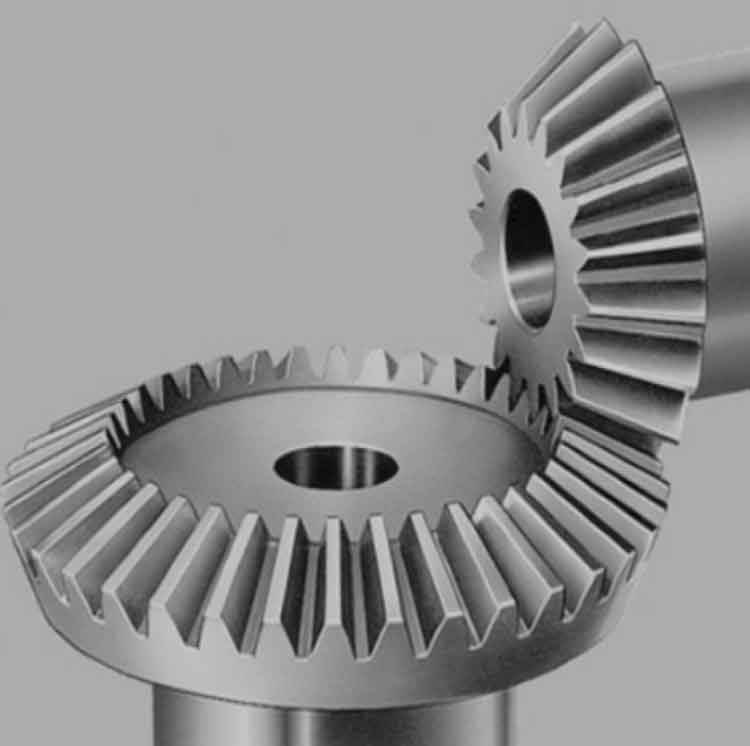
Gearbox optimization with straight bevel gears is a critical aspect of improving the performance and efficiency of various mechanical systems. By optimizing gear designs, materials, and manufacturing processes, engineers can achieve better load distribution, reduced friction, and increased overall system efficiency. Let’s explore some case studies and insights on gearbox optimization with straight bevel gears:
Case Study 1: Construction Equipment Gearbox
Issue:
A manufacturer of construction equipment was facing challenges with gearbox reliability and efficiency. The gearboxes were experiencing premature failures and increased energy consumption.
Solution:
- Material Selection: After conducting a thorough analysis of the application’s requirements, the manufacturer opted for higher-grade gear materials with improved strength and wear resistance. Carburizing and quenching heat treatment processes were applied to further enhance the gear’s surface hardness and durability.
- Tooth Profile Optimization: The gear tooth profiles were optimized to improve tooth contact and reduce friction during meshing. This optimization led to reduced noise levels and smoother gear operation.
- Bearing Selection: Upgrading to high-quality bearings with low frictional losses improved the gearbox’s overall efficiency and reduced power consumption.
- Lubrication System: The lubrication system was optimized to ensure proper oil flow and distribution to minimize friction and wear between gear teeth.
- Gearbox Housing Rigidity: The gearbox housing was reinforced to prevent misalignment and reduce deflection, ensuring consistent gear meshing and load distribution.
Result:
The optimized gearbox design resulted in increased reliability, extended service life, and reduced maintenance costs for the construction equipment manufacturer. The energy efficiency improvements also led to lower operating costs and a positive impact on the environment.
Insights:
- Material selection and heat treatment are crucial in enhancing gear strength and durability.
- Tooth profile optimization can lead to better load distribution and reduced friction, improving overall gear efficiency.
- Proper lubrication and bearing selection contribute to reduced power losses and enhanced gearbox performance.
Case Study 2: Mining Machinery Gearbox
Issue:
A mining machinery company faced challenges with excessive noise and vibration in their gearbox, leading to frequent breakdowns and downtime.
Solution:
- Tooth Profile Modification: The manufacturer modified the gear tooth profile from straight bevel to a modified tooth profile. This change reduced instantaneous tooth engagement during meshing, resulting in smoother operation and reduced noise levels.
- Gear Alignment and Tolerance Control: Precision alignment of gears and strict control of manufacturing tolerances were implemented to minimize gear misalignment and reduce noise and vibration.
- Surface Finish Enhancement: Gear surface finish was improved through gear grinding and gear lapping processes, further reducing noise and wear.
- Vibration Damping: Vibration damping materials were added to the gearbox housing to attenuate vibrations and prevent their transmission to the surrounding structure.
Result:
The modified gearbox design significantly reduced noise and vibration levels, leading to a more comfortable and quieter mining operation. Downtime due to gear failures was substantially reduced, resulting in increased productivity and lower maintenance costs.
Insights:
- Tooth profile modifications can improve gear meshing characteristics and reduce noise.
- Precise gear alignment and tight tolerance control are crucial to reduce noise and vibration.
- Gear grinding and lapping processes can improve surface finish and gear quality.
In conclusion, gearbox optimization with straight bevel gears involves a combination of material selection, tooth profile optimization, lubrication, gear alignment, and housing design improvements. By addressing specific challenges and applying insights from case studies, engineers can achieve more reliable, efficient, and quieter gear systems in various industrial applications.
